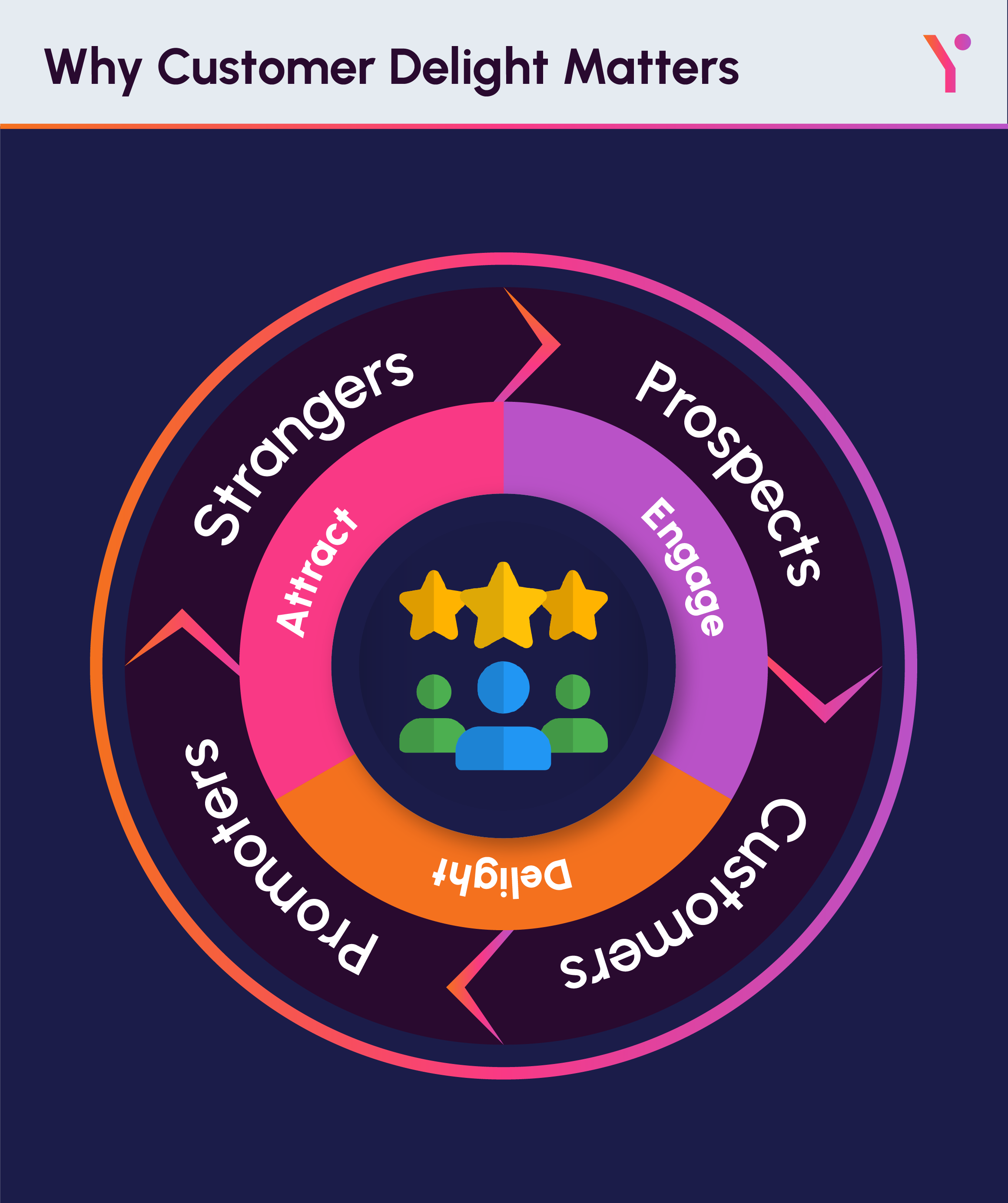Introduction
Customer experience is a top priority when it comes to growing your business and taking informed business decisions. In this article, we will discuss the evolution and importance of customer experience and how you can leverage digital transformation to streamline your processes.
Customer experience plays a vital role in organisations all over the world. There are numerous stats that point towards the importance of customer experience and its impact of the growth of an organisation.
According to a study by Zippia, 80% of organisations that have focused on customer experience have managed to improve their revenue. Furthermore, another survey conducted by CX Index found that organisations that focused on customer experience saw a 60% increase in revenue.
In the digital age, it is important to leverage digital transformation to help improve your processes and enhance customer experience. In this article we will discuss all the aspects pertaining to the digital transformation of customer experience and how it can help you grow your organisation.
The Evolving Landscape of Customer Experience (CX)
The Covid-19 era saw a significant paradigm shift in how organisations operate. From focusing on maximising profits by creating economies of scale, it has now drastically shifted towards customer experience.
According to PWC, 73% of organisations have ranked customer experience as their primary focus when making organisational decisions. This shift is further reinforced when we look at the customer experience market, valued at $10.6 billion in 2022 and set to have a CAGR of 15.4% from 2023 to 2030.
To tie in the aspect of digital transformation, the pandemic saw a spike in cloud environments within organisations. These practices were preferred by business owners and customers alike. This coupled with the technological advancements such as AI, AR and VR, businesses have the perfect combination to improve their business revenue.

Why Customer Delight Matters
The customer experience market has come a long way from where it was only a few years ago. We have shifted from “Customer Satisfaction” to “Customer Delight”. Customer delight takes satisfaction to a new level where your customers become your marketing team. With word-of-mouth being by far the best form of getting customers through the door, Delight allows you to make your customers your promoters.
Customer delight plays a vital role in the growth of your organisation and its importance can be summarised in the following:
Enhanced Loyalty and Retention
Delighted customers are likely to become loyal affiliates for your brand. They are not only willing to make repeat purchases but also recommend your products or services to others, contributing to increased customer retention and long-term revenue growth.
Positive Brand Perception
When customers experience exceptional service or receive personalised attention, they develop a positive perception of your brand. Positive word-of-mouth and online reviews further bolster your brand’s reputation, attracting new customers and fostering trust and credibility in the market.
Differentiation in a Crowded Market
In a competitive marketplace where offerings are often commoditised, customer delight serves as a powerful differentiator. By delivering unique and memorable experiences, you can stand out from competitors and carve a niche for your brand, attracting customers seeking value beyond price.
Increased Customer Lifetime Value (CLV)
Delighted customers tend to spend more over their lifetime with your brand. By consistently exceeding their expectations and offering additional value through personalised offers, proactive support, and seamless interactions, you can maximise their CLV and drive sustainable revenue growth.
Reduced Churn and Negative Feedback
Customer delight plays a crucial role in reducing churn and negative feedback. Satisfied customers are less likely to move over to your competitors or voice complaints publicly, helping you maintain a positive brand image and minimise damage to your reputation.
Insights for Continuous Improvement
Engaging with customers to understand their needs, preferences, and pain points provides valuable insights for continuous improvement. By actively soliciting feedback and leveraging data analytics, you can identify areas of improvement, improve your offerings, and keep evolving with new customer expectations.
The Power of Digital Transformation for CX
Digital transformation has helped organisations in every sector to improve and streamline their operations. These practices have also allowed the customer experience market to make their processes more effective. Following are some of the ways digital transformation can be integrated into your customer experience practices.
Building Seamless Omnichannel Experiences
In today’s digital age, customers expect seamless experiences across various touchpoints, whether online, mobile, or in-store. Digital transformation enables businesses to integrate these channels seamlessly, allowing customers to switch between them effortlessly while maintaining a consistent experience.
By leveraging technologies such as cloud-based platforms, API integrations, and customer relationship management (CRM) systems, businesses can unify customer interactions, streamline processes, and deliver personalised experiences regardless of the channel.
Empowering Customers with Self-Service Options
Self-service options allow customers to resolve queries, issues, and complete transactions independently, reducing reliance on traditional support channels.
Digital transformation enables businesses to deploy self-service portals, knowledge bases, chatbots, and interactive FAQs, providing customers with instant access to information and support round the clock. By automating routine tasks and empowering customers to self-serve, businesses can enhance efficiency, reduce support costs, and improve customer satisfaction.
Leveraging Data Analytics for Personalised Experiences
Data analytics can be a great way to understand customer behaviour, preferences, and needs. Through digital transformation initiatives, businesses can harness large data sets from various sources, including customer interactions, transactions, and social media, to gain actionable insights.
By leveraging analytics tools, such as machine learning and predictive analytics, businesses can segment customers, identify patterns, and deliver highly personalised experiences tailored to individual preferences. Personalisation not only enhances customer engagement but also drives conversion rates and fosters loyalty.
Mapping the Customer Journey for Success
Mapping the customer journey involves understanding every stage of the customer’s interaction with the business, from initial awareness to post-purchase support. Digital transformation enables businesses to map and optimise the entire customer journey by leveraging tools such as customer journey mapping software, CRM systems, and marketing automation platforms.
By analysing customer touchpoints, pain points, and moments of truth, businesses can identify opportunities for improvement and design experiences that meet or exceed customer expectations at every stage. A well-mapped customer journey ensures consistency, relevance, and seamless transitions, ultimately driving customer satisfaction and loyalty.
Practical Steps for Implementing a Customer-Centric Digital Transformation
Implementing a customer-centric digital transformation requires a strategic approach and careful planning. Here are some practical steps to guide you through the process:
Understand Your Customers
Start by understanding of your customers’ needs, preferences, and pain points. Conduct market research, analyse customer feedback, and gather data to identify trends and patterns. Use this information to create customer personas to help you reach specific segments of your target audience.
Cultivate a Customer-Centric Culture
Foster a culture that focuses on customer needs and values. Ensure that every employee, from frontline staff to senior leadership, understands the importance of delivering exceptional customer experiences. Encourage collaboration across departments and empower employees to take ownership of customer satisfaction.
Invest in the Right Technology
Identify and invest in the technology solutions that enable you to deliver personalised, seamless, and convenient experiences across all touchpoints. This may include customer relationship management (CRM) systems, data analytics tools, marketing automation platforms, and customer feedback mechanisms.
Optimise Customer Touchpoints
Evaluate and optimise every customer touchpoint, both digital and physical, to ensure consistency and coherence across channels. Map out the customer journey from awareness to advocacy and identify opportunities for improvement at each stage. Implement solutions to streamline processes, reduce friction, and enhance the overall customer experience. This can be done through custom website design and development and progressive website application.
Empower Employees
Equip your employees with training, tools, and resources they need to deliver exceptional customer service. Provide ongoing training and development opportunities to build their skills and knowledge. Encourage a customer-first mindset and empower employees to proactively address customer needs and solve problems.
Collect and Act on Customer Feedback
Regularly collect feedback from customers through reviews, and other feedback channels. Use this feedback to identify areas which can be improved and make data-driven decisions about product offerings, service delivery, and customer interactions. Act promptly on customer feedback to demonstrate your commitment to continuous improvement. You can take the help of business management system software to simplify this process.
Measure and Monitor Performance
Establish key performance indicators (KPIs) to track progress toward your customer-centric goals. Monitor and analyse relevant metrics, such as customer satisfaction scores, Net Promoter Score (NPS), customer lifetime value (CLV), and customer retention rates. Use these insights to assess the impact of your digital transformation efforts and make informed adjustments as needed.
Iterate and Evolve
Digital transformation is a long term process that requires continuous iteration and evolution. Stay responsive to changing customer needs, market dynamics, and technological advancements. Regularly review and refine your customer-centric initiatives to ensure you are aligned with your strategic objectives.
Measuring the Impact of CX Initiatives
Measuring the impact of customer experience (CX) initiatives is important to understand how effective your current strategies are and how they can be improved:
Customer Satisfaction (CSAT) Score
CSAT surveys measure overall customer satisfaction with a product, service, or interaction. Customers are typically asked to rate their satisfaction on a scale, and the average score is calculated to gauge overall satisfaction levels.
Net Promoter Score (NPS)
NPS measures the likelihood of customers to recommend a company to others. Customers are asked a single question, typically on a scale of 0-10, about how likely they are to recommend the company. Based on their responses, customers are categorised as either promoters (9-10), passive customers (7-8), or detractors (0-6). The NPS is calculated by finding the difference between the detractors from the promoters.
Customer Effort Score (CES)
CES measures the ease of the customer experience, particularly during specific interactions such as making a purchase or resolving an issue. Customers are asked to rate the ease of completing a task or resolving an issue on a scale. Lower scores indicate higher levels of customer effort.
Retention Rate
Retention rate measures the percentage of customers that keep returning to your organisation over a specific period. A high retention rate indicates strong customer loyalty and satisfaction.
Churn Rate
Churn rate measures the percentage of customers who stop doing business with a company over a specific period. A high churn rate may indicate dissatisfaction with the customer experience.
Customer Lifetime Value (CLV)
CLV measures the total revenue which can be expected from customer base over the entire duration of their relationship. By analysing CLV, businesses can assess the long-term impact of CX initiatives on revenue generation and profitability.
Repeat Purchase Rate
As the name suggests, repeat purchase rate is the percentage of customers who make multiple purchases from a company over time. A high repeat purchase rate indicates customer loyalty and satisfaction.
Customer Feedback and Sentiment Analysis
Collect and analyse qualitative feedback from customers through surveys, reviews, and social media channels. Use sentiment analysis tools to categorise feedback as positive, negative, or neutral and identify trends and themes.
Customer Journey Analytics
Analyse customer journey data to understand how customers interact with your brand across different touchpoints and channels. Identify areas of friction or opportunity where CX initiatives can be improved.
Operational Efficiency Metrics
Measure the impact of CX initiatives on operational efficiency metrics such as average handling time, first contact resolution rate, and service level agreement (SLA) compliance. Improvements in these metrics can indicate enhanced customer satisfaction and experience.
Conclusion
The customer experience market is changing at a rapid rate and businesses understand the importance of customer experience to grow your organisation’s revenue. This coupled with digital transformation can help you expand your business and promote growth.
If you are looking for a digital partner that can expertly leverage digital transformation to help with your customer experience practices, look no further. Contact FuturByte and get a free consultation on how we can help.
Frequently Asked Questions
Digital transformation in customer experience refers to the process of leveraging digital technologies and strategies to enhance interactions between businesses and their customers. It involves using digital tools and channels to deliver personalised, seamless, and convenient experiences across various touchpoints throughout the customer journey.
Digital transformation is essential for improving customer experience because it allows businesses to meet the evolving needs and expectations of today’s digital-savvy customers. By embracing digital technologies, businesses can deliver more personalised, efficient, and convenient experiences that drive customer satisfaction, loyalty, and retention.
Key components of digital transformation in customer experience include building seamless omnichannel experiences, empowering customers with self-service options, leveraging data analytics for personalised experiences, and mapping the customer journey for success. These components focus on enhancing every stage of the customer journey and optimising interactions across multiple channels.
Businesses can create seamless omnichannel experiences by integrating various digital channels (e.g., website, mobile app, social media, in-store) to provide consistent and cohesive experiences across all touchpoints. This involves synchronising data, processes, and communication channels to enable seamless transitions as customers move between channels.
Data analytics plays a crucial role in digital transformation for customer experience by enabling businesses to gather, analyse, and leverage customer data to gain insights into their behaviour, preferences, and needs. By harnessing data analytics, businesses can deliver more personalised and relevant experiences tailored to individual customers, driving engagement and satisfaction.
Have questions or feedback?
Get in touch with us and we‘l get back to you and help as soon as we can!




